1974 BMW 2004 SA
We trace the roots of the 2004, which represents the first line of BMWs built specifically for the South African market, and which was based on the Gias 1700.
South African Neue Klasse
We trace the fascinating history of the South African 2004.
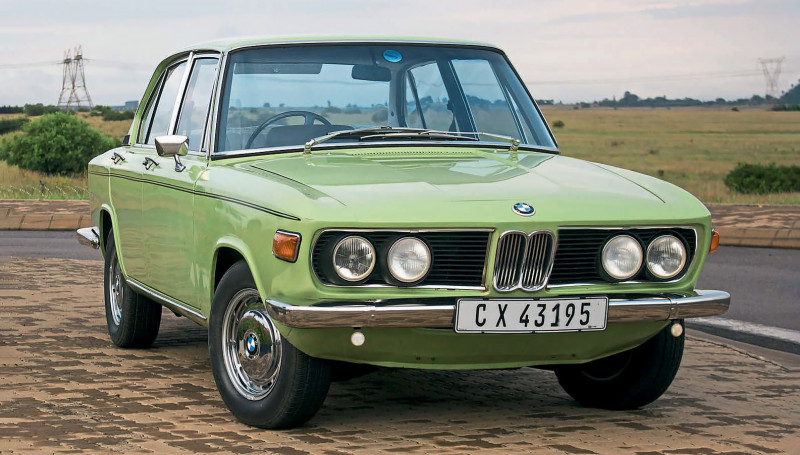
The first BMW to land on the southern tip of Africa was, in fact, not a car but a motorcycle brought along by a German immigrant in 1928. By 1932 another German, Gunter Ludwig, started importing motorcycles to SA as the sole BMW concessionaire. Ludwig, a garagiste, had formalised his small business the year before, naming it Club Garage, as it was positioned close to the Zwartkop Country Club just outside of Pretoria. In 1957 it became Club Motors, and by 1958 it imported the first BMW car, the Isetta, and continued to import BMWs until 1968. Ludwig and his son, together with prominent Pretoria business mogul Johannes Pretorius and several associates, identified an opportunity to manufacture BMWs in SA when BMW AG took over the bankrupt Glas factory in 1966.
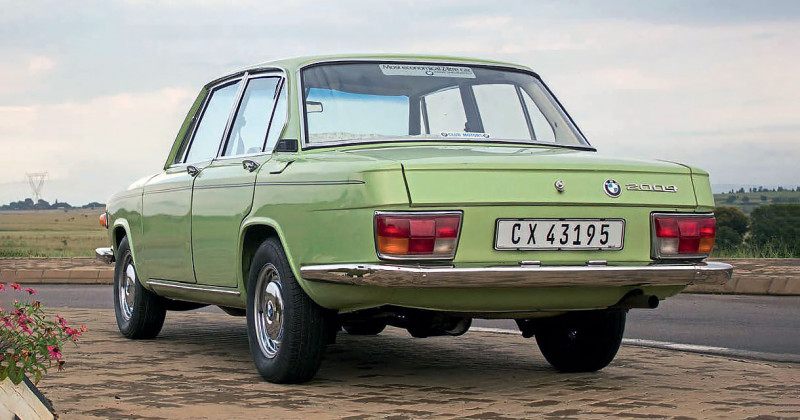
BMW had almost suffered the same fate! By December 1959, the company was virtually bankrupt, with Mercedes-Benz pounding on the door. Luckily, shrewd industrialist Herbert Quandt, who became the majority shareholder during this time, was able to restructure BMW and save it from the clutches of its biggest rival. That restructure resulted in a revitalised BMW with the introduction of the ‘Neue Klasse’, the 1500 breaking cover a mere two years after standing on the precipice of bankruptcy, at the 1961 Frankfurt Motor Show. It went on sale the following year, together with the 3200 CS, an elegant V8, which had been designed by the Italian Nuccio Bertone and his apprentice Giorgetto Giugiaro (who designed the M1). By 1963 the 1500 had evolved into the 1800, and in later years would be offered as the 2000. In 1965 the 2000 C was launched, and the following year at the Geneva Auto Show, the compact two-door saloon, the 1600-2, was unveiled to the world. It then became very apparent that if BMW was to sustain its growing ambitions, it would need additional capacity.

When BMW struck its 50th anniversary, it took over the Glas operation in Dingolfing in November 1966. Glas found great success after the Second World War with the Goggo scooter, as demand was high amongst Germans for affordable transportation. This was followed in 1955 with the well-known micro-car, the Goggomobil, which proved popular among Germans still recovering from the war. Glas, however, realised that prosperity was on the horizon and that Germans on the up would be looking for small cars, therefore introducing the Isar in 1958. Aspiring to gain a share of the growing middle and upper class, Glas introduced a mid-sized 1500 (which went into production as the 1700) and 1300 GT Coupé at the Frankfurt Motor Show in 1963. Aiming squarely at the affluent end of the market, Glas went all-in with the introduction of its V8 in August 1965 with a displacement of 2.6 litres. The V8 had been penned by a wellknown Italian designer at the time Pietro Frua, who, most notably, had also done work for Maserati. The ‘Glaserati’, as it was known, was to be Glas’s swansong. The demise of Glas can largely be attributed to the rapid expansion of its model line-up, targeting too wide of a spectrum of the market and poor quality control.
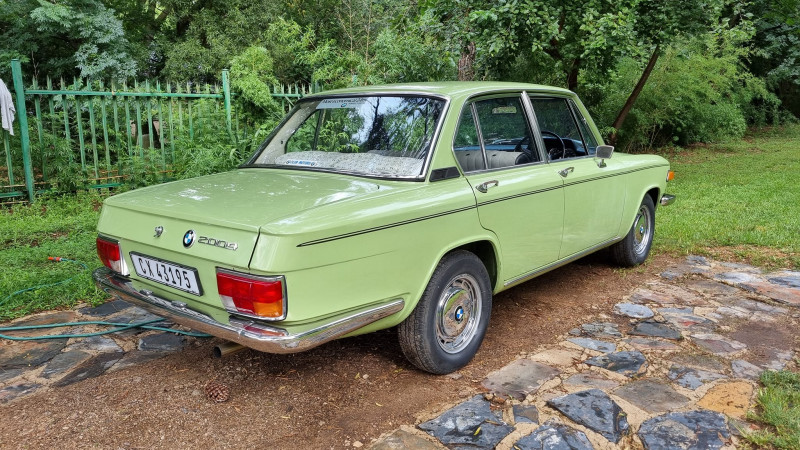
When BMW took over Glas it had pledged to its financier, the state of Bavaria, that it would retain the workforce and continue the production of the model line-up. The 1300 GT and 1700 GT Coupés were rebranded as BMWs and fitted with the engine, gearbox and independent rear axle from the 1600-2 ti, designated as the 1600 GT. The V8 was also rebranded as a BMW and fitted with the 3.0-litre engine that Glas had intended. Production of the small Glas models, together with the 1700, ended with the close of 1967. The rebranded V8 continued until May 1968, and the BMW 1600 GT ceased in October of that year. Surprisingly, the Goggomobil lingered on until June 1969. With the demise of Glas, BMW was able to get rid of one of its rivals, secure a technically skilled workforce, and the capacity to increase production, plus the Glas innovation of using a rubber overhead camshaft drive belt. But this was not the end of the road for the Glas 1700! Gunter Ludwig (head of the BMW concessionaire, Club Motors), together with several associates, joined Johannes Pretorius at Euro-Republic Automobile Distributors (later known as Praetor Monteerders) in 1968 and entered into an agreement with BMW AG to manufacture under license BMWs using the Glas 1700 bodies.

BMW provided the Glas tooling for the bodies and shipped components such as engines, gearboxes and differentials. This translated into the Glas bodies of the 1700 being badged as BMWs and fitted with the 1.8-litre engine and running gear from the BMW 1800. BMW must have been relieved to see the back of the Glas 1700, as it posed the biggest competitor out of the Glas range. The 1700 was also designed by Pietro Frua, and, it cut quite a handsome figure. Frua was also responsible for the 1300/1600 GT, and also designed the beautiful BMW 2800 GTS Coupé, based on an E3 chassis, though unfortunately, it never went into production, except for a singular prototype.
The 1700 was similar in proportions to the BMW 1800, and even sported the ‘Hofmeister Kink’, and came with 80hp on tap. The twin-carb, TS version pushed out 100hp, achieving a top speed of 106mph, matching the performance of the BMW 1800, for less money. Autocar in the UK gave it a raving review stating that: “The interior was well-finished and sober, and the car drove outstandingly, yet quietly. The suspension was particularly impressive, as there is little body roll when the car is being hustled through bends, allowing for sure-footed cornering.”

In June 1968, the first Glasbodied BMWs rolled off the production line at the Rosslyn facility outside Pretoria, and this model was initially named the 1800 GL. In July of the following year, it was joined by the 2000 GL – shortly thereafter, they were badged 1800 SA and 2000 SA. These BMWs retained the complete body and appearance of the Glas 1700, with only the BMW roundel front and back to distinguish which Bavarian stable it was from. Inside it was a total Glas affair. But underneath, it was all BMW, accounting for the engine, gearbox, differential and front suspension all carried over from the BMW 1800 and 2000, except for the rear suspension, which still used the old leaf spring from Glas.

The sales brochures and advertisements of the time punted that the BMWs were for the sporting, driving enthusiasts with the capability of transporting five passengers in comfort. It also heavily stressed the engineering prowess of BMW, and its racing pedigree, which offered a pleasurable driving dynamic – touting it as the hallmark of this prestigious German marque. It is worth noting that complete knock-down kits of the SA models were exported from SA to then Rhodesia, where they were assembled by Willowvale Motor Industries and sold as BMW Cheetahs until production ended in SA. By 1972 BMW AG took control of the SA operation, which became known as BMW South Africa, establishing the first plant outside of Germany. Just a year before the E3 2500 and 2800 were put into production, BMW AG was looking to further ramp up output with the introduction of the E12 5 Series. It was therefore decided to bring the SA models more in-line with the outward characteristics of the BMW line-up. Pietro Frua was tasked to bring about the necessary transformation, which would result in the 1804 and 2004. Frua therefore heavily relied on the parts bin of the existing models. In the front, he modified the grille from the E3 Saloon and inserted the headlamps from the E12 5 Series while crafting new kidneys to fit and attaching side indicators from the E9. At the rear, a crafty Frua swapped the lights of the E12 around (left went right and vice versa) and swung them 180°, finishing off with the new badging placed on the boot next to the roundel. On the inside, a BMW steering wheel was installed along with window winders from the 5 Series, and by July 1969 the instrument cluster had been brought in line with the 1800 and 2000 BMW models, which included a rev counter.

But there were also changes underneath to improve handling. This resulted in uprated coils, springs and an anti-roll bar in the front and stiffer leaf springs at the rear, which improved road-holding by 30%. Interestingly, Frua had developed a one-off Glas/BMW GL 1800 Kombi (station wagon) prototype in 1968, which he presented to BMW AG specifically for the SA market, but was rejected. The 1804 and 2004 were launched in August 1973 amid the oil crisis of the time. BMW then shrewdly marketed the 2004 as the most fuel-efficient four-cylinder 2.0-litre offering in SA.
And BMW SA had the receipts to prove it: in a road test conducted by the Sunday Times, the 2004 was the most efficient in its class, achieving 7.5-litres per 100km (37.5mpg) at an average speed of 80km/h, covering a distance of 752km on a 58-litre tank of fuel, quite remarkable for the time.

The car you see in front of you is a ’74 model in typical ’70s green. It belongs to car collector and overall automotive enthusiast Marek Letowt, who has a phenomenal BMW collection, which has been featured in BMW Car and other UK publications. This particular 2004 was part of BMW SA’s classic fleet, which predominantly resided in the Auto Carriers (transporter of BMW cars by truck and train) showroom in Rosslyn close to the plant. This 2004 was eventually sold off to a BMW employee when he left the company. 10 years ago, Marek traced the car through its number plate, establishing that the new owner had relocated to Plettenberg Bay while storing the car in Johannesburg when he was not using it – wise, avoiding the ominous tin-worm. Marek then made the owner an offer, which he gladly accepted.
This being one of a handful of examples left in SA, it is completely original, has never been painted, and has a genuine 70,000km showing on the clock. Thankfully it is unmolested but shows some patina, which reflects the character of a 48-year-old BMW. These cars did not appeal to the conventional mainstream buyer; to start off with, they were expensive, but they found a wide enough audience that more than twice the amount was sold (including the 1800 SA, 2000 SA and 1804) than the Glas variant in Germany when production ended in SA in 1975.
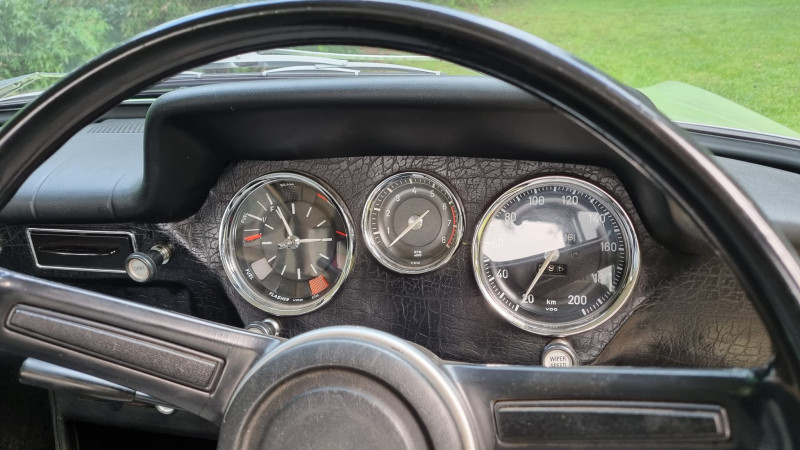
Outwardly the 2004 has a more squared appearance compared to the BMW 2000. The crease in the shoulder line, together with the rake of the A-pillar, also makes it look more upright compared to the BMW. Naturally, the front has the appearance of a BMW, especially that of the E3, but the rear is not as cohesive; the E12 lights, in their upside-down position, could be mistaken for those of the early Mercedes-Benz W114/5 models. Step inside, and it has the appearance of a BMW from this era; the BMW steering wheel is similar in size to that of a tea clipper, while the thin pillars all-round and substantive glass allow for great visibility. The lever that allows you to move the seat back and forth is placed next to the door sill and is the same mechanism which BMW adopted for the early E12 5 Series.
Twist the key, and it fires up with ease; however, it takes a substantial amount of effort to turn the huge steering wheel while stationary. Once on the go, the controls, that is the clutch, accelerator, brake, and even the steering, are easy to engage and well-weighted. It feels nippy, with the M10 engine pushing out 75kW (102hp) and only weighing 1020kg, so much so that we are easily able to reach 140km/h (87mph) on the country road we are traversing. We’re not sure how accurate the speedo is, but it puts on a sprightly performance, while the brakes are up to the task of reining in the horses when the curvature of the asphalt demands it. The 2004 is a really fun car to drive and all the better for the BMW bits that have been added to it. No wonder so many fell for them five decades ago.
This 2004 is in remarkable condition for its age. Interior featured a BMW steering wheel and window winders. The 2000 was one of the early Glas-bodied BMWs made in South Africa. The 2.0-litre four-cylinder M10 engine made 102hp, which meant punchy performance.


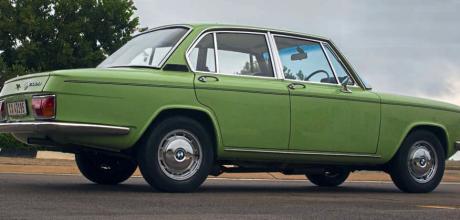
The 1973 BMW 1004 SA version — look the same